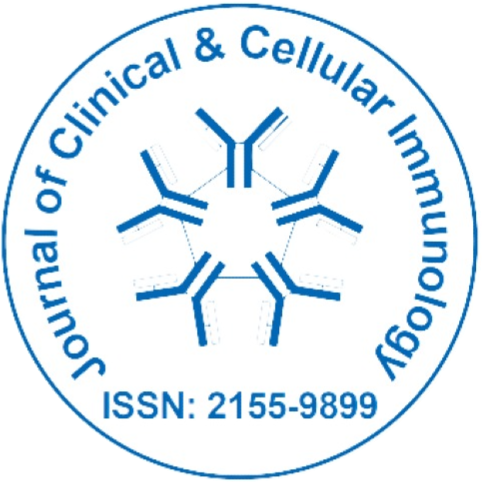
Journal of Clinical and Cellular Immunology
Open Access
ISSN: 2155-9899

ISSN: 2155-9899
Wen Qiu, Mingde Ji, Yanlai Lu, Chenhui Zhao, Wenxing Gao, Fengxia He, Jing Zhang, Dan Zhao and Yingwei Wang
Nanjing Medical University, China
Scientific Tracks Abstracts: J Clin Cell Immunol
Inflammatory response has been reported to contribute to the renal lesions in rat Thy-1 nephritis (Thy-1N) as an animal model of human mesangioproliferative glomerulonephritis (MsPGN). Besides C5b-9 complex, C5a is also a potent pro-inflammatory mediator and correlated to severity of various nephritic diseases. However, the role of C5a in mediating pro-inflammatory cytokine production in rats with Thy-1N is poorly defined. In the present study, the levels of C5a, interleukin-6 (IL-6) and tumor necrosis factor-�?± (TNF-�?±) were first determined in the renal tissues of rats with Thy-1N. Then, the expression of IL-6 and TNF-�?± was detected in rat glomerular mesangial cells (GMC) stimulated with our recombinant rat C5a in in vitro. Subsequently, the activation of mitogenactivated protein kinase (MAPK) signaling pathways (p38 MAPK, ERK1/2 and JNK) and their roles in the regulation of IL-6 and TNF-�?± production were examined in the GMC induced by C5a. The results showed that the levels of C5a, IL-6 and TNF-�?± were markedly increased in the renal tissues of Thy-1N rats. Rat C5a stimulation in vitro could up-regulate the expression of IL-6 and TNF-�?± in rat GMC, and the activation of MAPK signaling pathways was involved in the induction of IL-6 and TNF-�?±. Mechanically, p38 MAPK activation promoted IL-6 production, while either ERK1/2 or JNK activation promoted TNF-�?± production in the GMC with exposure to C5a. Taken together, these data implicate that C5a induces the synthesis of IL-6 and TNF-�?± in rat GMC through the activation of MAPK signaling pathways.
Wen Qiu is currently working as an Associate Professor at Department of Immunology, Nanjing Medical University. He is exploring the role of complement especially C5b-9 in the induction of Glomerular Mesangial Cell (GMC) apoptosis, inflammation and proliferation in rat Thy-1 nephritis as a widely used model of human mesangial proliferative glomerulonephritis (MsPGN) and its mechanisms. These include signal transduction, microRNA regulation and transcriptional factor regulation. He is also exploring the effects of post-transcriptional regulation such as ubiquitination and acetylation on the activation of signaling molecules, transcription factors and histones.
Email: qiuwen@njmu.edu.cn